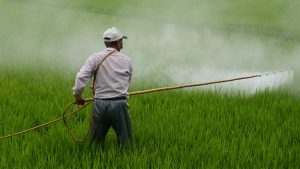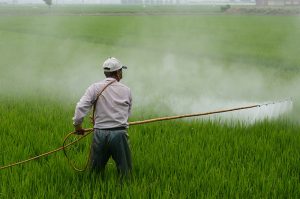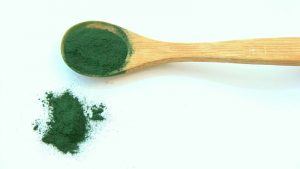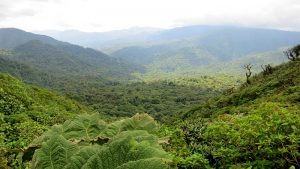For 20 years, France has authorized the use of the highly toxic pesticides. Today, everything in Martinique and Guadalupe is contaminated. And it will be for 700 years.
Imagine two islands in the middle of the Atlantic ocean, dominated by lush greenery and surrounded by crystalline waters. White beaches, palm trees, sunny weather. Places that appear unspoiled, but are actually devastated by an ultra-toxic product which was used for decades, regardless of its known impact on the envirnonment and human health.
Malcom Ferdinand (chercheur) : « La contamination au chlordécone est durable, pouvant aller jusqu’à 600 ans. Elle est généralisée, elle affecte tout l’écosystème, et elle augmente le nombre de cancers de la prostate » #MediapartLive pic.twitter.com/QRLIXD4jeS
— Mediapart, le Studio (@MediapartStudio) February 20, 2019
These two islands do infact exist: they are called Martinique and Guadalupe. They’re French overseas departments in the Antilles. Today, everything (soil, rivers, livestock, fish and people) is contaminated by a pesticide known as chlordecone.
Banned in the US since the 1970s
The story begins way back in 1972 and continues until 1993, generating one of the most serious health scandals in the world. Chlordecone, also known as kepone, was authorized for so long thanks to its effectiveness in fighting a parasitic beetle capable of destroying entire banana plantations, one of the main resources for the islands of Martinique and Guadalupe.
Problem: the pesticide is also an endocrine disruptor, recognized as neurotoxic, capable of altering fertility and classified as a possible carcinogen by the World Health Organization since 1979. However, substantially incontrovertible empirical evidence was already found in 1975 in the United States.
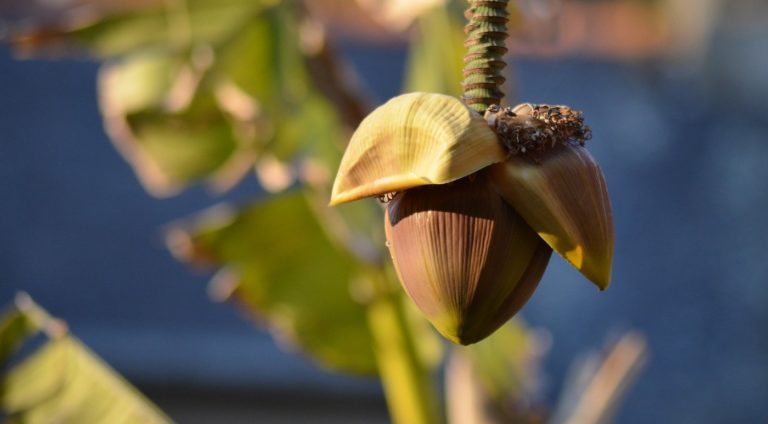
In the state of Virginia, in 1975, the Hopewell factory ran at full speed manufacturing the pesticide...until the workers, after being exposed to large doses of chlordecone, began to manifest disturbing health problems: severe neurological and testicular damage, motor function issues and mood swings, along with speech impariment, memory loss and uncontrolled eye movement.
The human body is able to eliminate half of the chlordecone absorbed within 160 days. Provided, of course, that you are not exposed to the substance again. In the United States, the problem was judged to be so serious that it led to the closure of the Hopewell factory and a ban on the product in 1977.
Jeune manifestant martiniquais croisé en marge de la #greve17decembre #Retraites #Toulouse #chlordecone @CTM_Martinique @CConconne @laliguecancer @GretaThunberg pic.twitter.com/ZNvDCVTAvs
— frantz mc (@frantzmc) December 17, 2019
The product was not banned in Guadalupe and Martinica. Farmers in banana plantations continued to spread the pesticide everywhere. Every day, with their bare hands. France would only impose a ban in 1990, and only on “metropolitan” (ie European) territory. The Antilles would have to wait another three years. And whoever had stocks available could use them until they were exhausted.
A land contaminated for centuries to come
The result is chilling. A report from the Santé Publique France agency in 2018 showed that the blood of 95% of the population of Guadalupe and 92% of that of Martinique are contaminated, along with almost all the soil and fresh water resources and even part of the sea surrounding the islands.
“The 1977 scientific reports had already indicated contamination. The state knew. Yet it continued to grant the authorization to trade the product. The truth has been hidden from farmers and the rest of the population, “said Louis Boutrin, a lawyer representing two associations in Martinique who filed a complaint in 2007.
“Everything that comes from the soil – he added – is now contaminated here. Such a situation could never have occurred in metropolitan France. ” According to experts, chlordecone will remain present in the land of Martinique and Guadalupe for 700 years.
The French Parliament therefore decided to set up an inquiry commission. After six months of work, it published its conclusions at the end of last November. Explaining that “that of the chlordecone is primarily a state scandal”, as confirmed by the chairman of commission Serge Letchimy. Institutions are, he added, “primarily responsible” for what happened in the West Indies. Causing “a health and environmental disaster”.
#Chlordécone : la commission d’enquête réclame la réparation du scandale sanitaire@Justine_Benin @SergeLetchimy @santeprevention @Inserm @Anses_fr https://t.co/EH4KsRtc4R
— Actu Environnement (@Actuenviro) December 4, 2019
An indictment without appeal. Followed by the request to reflect on compensation to be offered to the population “to repair the damage inflicted on those today suffering from diseases directly related to the use of chlordecone. Or even to accidental exposure, “added Letchimy, also asking to carry out extensive soil analyzes, in order to” create an integral cartography of the contamination “.
Meanwhile, the male population of the French West Indies is affected by 227.2 new cases of prostate cancer per 100,000 men. An absolute world record.


